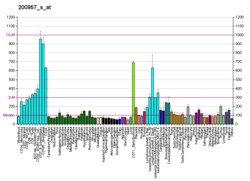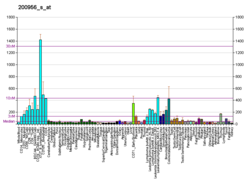Top Qs
Timeline
Chat
Perspective
Structure specific recognition protein 1
Protein-coding gene in the species Homo sapiens From Wikipedia, the free encyclopedia
Remove ads
FACT complex subunit SSRP1 also known as structure specific recognition protein 1 is a protein that in humans is encoded by the SSRP1 gene.[5]
Remove ads
Function
The protein encoded by this gene is a subunit of a heterodimer that, along with SUPT16H, forms chromatin transcriptional elongation factor FACT. FACT interacts specifically with histones H2A/H2B to effect nucleosome disassembly and transcription elongation. FACT and cisplatin-damaged DNA may be crucial to the anticancer mechanism of cisplatin. This encoded protein contains a high mobility group box which most likely constitutes the structure recognition element for cisplatin-modified DNA. This protein also functions as a co-activator of the transcriptional activator p63.[5]
Remove ads
Interactions
Structure specific recognition protein 1 has been shown to interact with NEK9.[6] SSRP1 further interacts with transcriptional activator p63.[7] SSRP1 enhances the activity of full-length p63, but it has no effect on the N-terminus-deleted p63 (DeltaN-p63) variant.
References
Further reading
External links
Wikiwand - on
Seamless Wikipedia browsing. On steroids.
Remove ads






